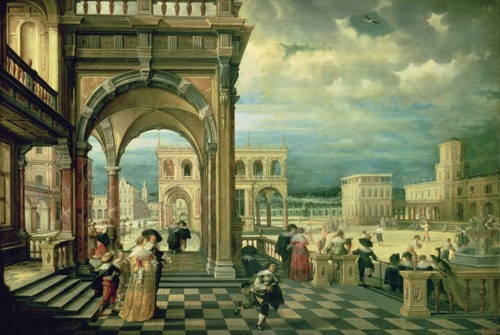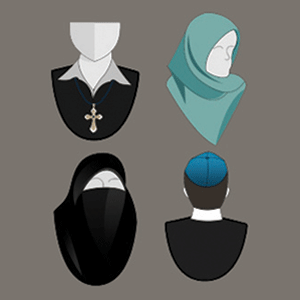
This article is a preview from the Spring 2016 edition of New Humanist. You can find out more and subscribe here.
Sixty years ago, the writer E.M. Forster searched for the best term to describe his particular cultured, secular, tolerant world-view. He dismissed atheist as “crude”, agnostic as “feeble” and liberal as “impossible”, and settled instead on “humanist”. This provoked an acid response from mediaevalist and Christian advocate C.S. Lewis, who objected to this casual redefinition of a term which had “long borne a useful, and wholly different, meaning”.
Around the same time, H.J. Blackham was on a mission to create a single over-arching identity for the ramshackle world of British atheists, ethical freethinkers, rationalists and secularists. This led in the 1960s to the creation of the British Humanist Association, with Blackham as its first Secretary. His humanism was rooted in natural science, scientific reason and a radical antipathy to religion: very different from Forster’s, though like Forster he appeared to regard the term itself as up for grabs.
Forced to choose between these three, I suspect most readers of New Humanist would identify with Blackham or Forster, and few if any with Lewis. But Lewis had a point. The term “humanist” has been used for centuries to refer neither to advocates of secular tolerance like Forster nor to champions of scientific atheism like Blackham.
Instead it refers to an anthropocentric tradition which studies and celebrates human culture in general, and human history in particular. In fact our whole conception of a distinctively human historical world, and of systematic historical study and analysis, is largely due to the humanists of the 14th, 15th and 16th centuries. This is quite some debt. We owe it not just to them, but also to ourselves, to acknowledge and honour it.
“Renaissance humanism” has been defined variously as a rediscovery of classical Greece and Rome; as an implicitly pagan challenge to Christianity; and as a broadly optimistic celebration of human potential. (It has also been mocked as a pretty fiction invented by romantic 19th-century historians: this view we can quickly dismiss, since the word “humanist” was definitely in use in Italy in the 15th century and in England in the 16th.) To assess these claims, we need some context.
From the 14th century, the politically fractured territory of northern Italy was Europe’s economic hothouse. Divided into city-states and princedoms, it was situated at the crossroads of continental trade, in touch with the Atlantic west, the Germanic north, with failing Byzantium and the rising Ottomans to the east, and with Arabic North Africa to the south. As such, it was at the cutting edge of innovative commercial and financial practices that underpinned the development of European mercantile capitalism.
The Renaissance of the 14th, 15th and 16th centuries took off in northern Italy as a cultural counterpoint to this commercial ascendancy. It has been described as a “rediscovery” of classical Greece and Rome, but classical antiquity – Rome in particular – had never been forgotten. The Catholic Church itself was a living legacy of the Roman Empire. But before the 14th century these memories of antiquity were either absorbed into the Christian world view, or assigned to the sphere of myth. The achievement of the Renaissance was to reimagine classical antiquity as a human domain in its own right, populated by people essentially like us, but separated from us by historical distance. If it still clothed antiquity with an aura of prestige, it nevertheless treated it as a human achievement from which others could learn. So artists set themselves to study antiquity’s surviving art. Architects studied its buildings and monuments. And “humanist” was the name given to those who studied its literature.
Renaissance humanists were literary scholars. They were philologists: linguists, grammarians, specialists in the translation and interpretation of ancient texts. Their studies covered documents from the pagan Roman past and early Christian manuscripts in Greek and Hebrew; Pico de Mirandola, author of the famous Oration on the Dignity of Man, was renowned as an expert in Hebrew. Humanism was not therefore defined simply by enthusiasm for classical antiquity. It was defined rather by its philological skills and techniques, applied to the analysis and interpretation of many ancient documents, including but not limited to those derived from classical antiquity.
But no technique is value-free. Every technique embodies a certain approach or attitude to the task in question. The motto of the Renaissance humanists was Ad fontes, meaning “back to the sources”. But for an individual scholar at their desk, the source could only be accessed via the document at hand. And the document at hand might be the end-point of a chain of human events going back over centuries, during which an original manuscript had been copied, translated, re-copied and re-translated, with each operation subject to human error, mischief or well-meant amendment. In trying to unpick these tangles, humanist scholars were grappling directly with historical process, not just in the subject-matter addressed by the document, but also in the layered complexity of the document itself as a human artefact.
Hence our debt to the Renaissance humanists for the notion of historical process: the notion of a cumulative process of human action through time, characterised by patterns of cause and effect and meaning. And we owe to them also the craft of historical study with its careful attention to source material. Of course their work was only a starting point – but without it, without their combination of painstaking diligence and bold anthropocentrism, there would never have been the long debate about historical meaning that was taken up by Vico, Voltaire, Hegel, Marx, Ranke, Croce and the rest, and still goes on today.
Humanists were therefore known by their philological skills, by their principle of going back to the sources, and by the historical sensibility implicit in these. In addition, they were known for sitting outside the established institutions of learning, the Church and universities, whose conservative theological curriculum had no place for them. Instead, if they were wealthy, they financed their own studies; and if they were not, they found secular patrons, or worked as private tutors, or entered the new medium of print as printer-publishers.
We may be tempted to interpret this distance from the Church as evidence of humanists’ hostility to religion, but this would be a mistake. Humanism was not a religious or philosophical stance, but a form of scholarship: humanists were united in their enthusiasm for and interrogation of documents, but they disagreed profoundly about the meaning and value of those documents. Petrarch explored pagan antiquity and wrote letters to Cicero and Virgil as if they were old friends; Pico used his Hebrew scholarship to give a new and optimistic spin to the Biblical notion of human free will; Erasmus challenged the Church from within through sharp polemics and new translations of scripture from the Greek; Calvin used his humanist training to help launch the Protestant Reformation; and the Jesuits incorporated humanist approaches into their counter-reformation educational programme.
There was no shared “humanist philosophy” or “humanist religion”. There was instead a shared understanding of historical documents as human artefacts, potentially flawed and open to interpretation. This was as true for those whose studies aimed to illuminate Christian faith as for those dealing with pagan antiquity. So Erasmus argued that, precisely because Christian faith is rooted in divinely inspired scripture, it becomes a religious duty to interrogate scripture and to weed out errors inherited from previous generations of lazy or incompetent copyists or translators.
Why does all this matter? Some readers of New Humanist will regard themselves as humanists in Blackham’s sense, committed to atheism, scientific rationalism and secularism. They may have no interest in what the word meant, or even whether the word existed, five hundred years ago. So be it. Blackham’s usage is now sufficiently well established to ensure that it isn’t going away.
But running alongside it is the other meaning of humanism, the older and more deeply embedded meaning, and that isn’t going away either. This humanism starts not from atheism or natural science, but from human culture and history. Informed by that, it approaches religion not as a problem or an enemy, but as an inevitable and recurrent human reality. This humanism underpins the academic concept of the “humanities”, referring to disciplines such as anthropology, history, linguistics and philosophy. And this humanism has many variants – the revolutionary humanism of Marx, the pragmatic humanism of Schiller and James, the Christian humanism of Bonhoeffer or Cupitt, the existential humanism of Sartre, to name a few.
None of us is obliged to identify ourselves as humanist. We do so as a matter of choice, and by making that choice we choose to align ourselves with a rich and complex tradition. It is important to remember this and to profit from it by drawing on the full resources of this tradition, and not to limit ourselves to a very recent attempt to redefine it.
Join the debate: send your comments on this article to editor@newhumanist.org.uk

